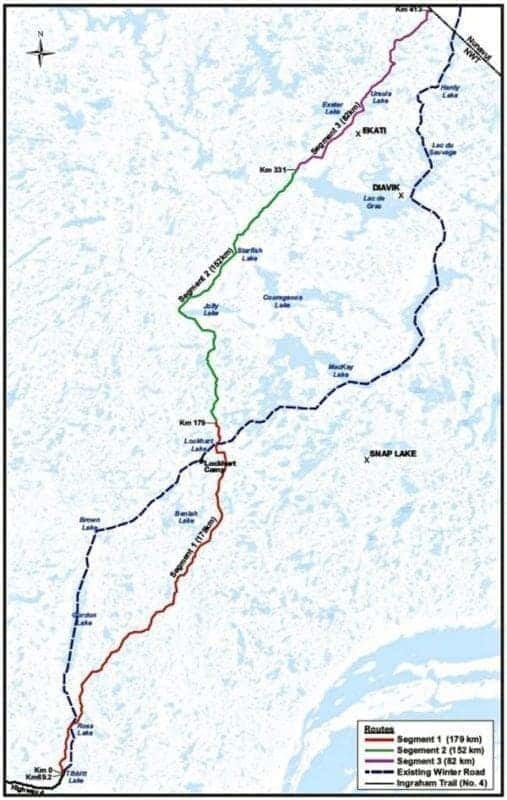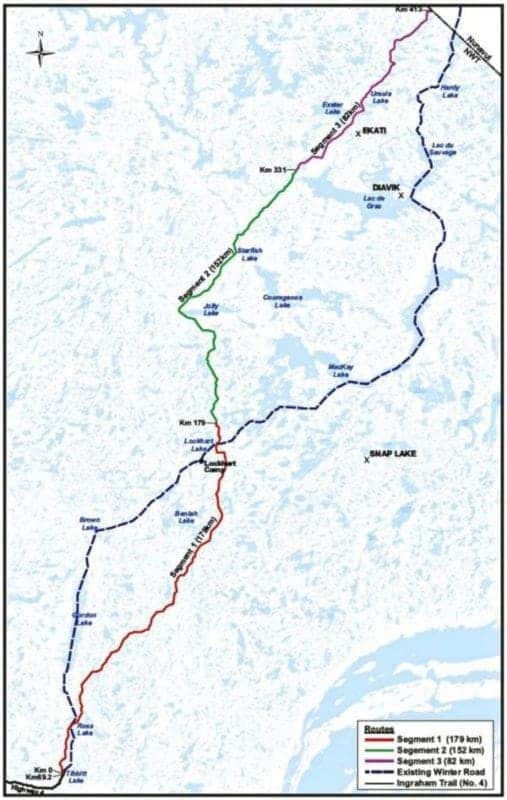Infrastructure Minister Wally Schumann says the GNWT is going to push hard for an all-weather road to the Slave Geological Province in the federal government’s next round of National Trade Corridor funding later this year.
“There’s no sense chasing the (rest of the) Mackenzie Valley Highway right now because if they were going to fully fund it, they probably would have given us more money out of that initial ask,” says Schumann.

He says the federal government does seem to be listening to the GNWT and giving it funding according to its priorities, however, he added that the results of this funding request should be “interesting.”
The Slave Geological Province Access Corridor is a proposed all-season road, close to 400 kilometres long, that would connect the end of the Ingraham Trail with the geological area that gave rise to the territory’s diamond mines.
It would reduce operating costs for the mines, boost exploration capability, and make it easier for mines to hook up to the hydro grid – which would also help build the case for the expansion of the Taltson hydroelectric facility.
The project has five phases: the replacement of the Frank Channel Bridge; environmental assessment and planning; a road from the end of the Ingraham Trail to Lockhart Lake; a road extending from there to Lac de Gras and the diamond mines; and a road from there to the border the NWT shares with Nunavut.
This infrastructure project could help keep diamond production alive in the territory beyond its impending slow-down. Gahcho Kue and Diavik will likely cease operations before 2030, followed by Ekati in 2034 – or earlier, if it doesn’t find a replacement expansion for the Jay Pipe, which it shelved in May – and production will slow down in the lead up to those dates.
The Conference Board of Canada, in a report released earlier this year, painted a grim picture of the NWT’s economic forecast. Even if Canadian Zinc opens its Prairie Creek zinc-lead-silver mine in 2020, and Fortune Minerals opens its NICO cobalt-gold-bismuth-copper mine in 2022, they will hardly hold a candle to the impact the diamond mines have had on the territory.
Earlier this month, De Beers invited close to 50 business and organizations to preview contract opportunities at Gahcho Kue Mine.
From the beginning of this year until May 2018, Gahcho Kue spent $108 million with NWT businesses. Last year, it spent $220 million total, which was 71 per cent of its spending.
